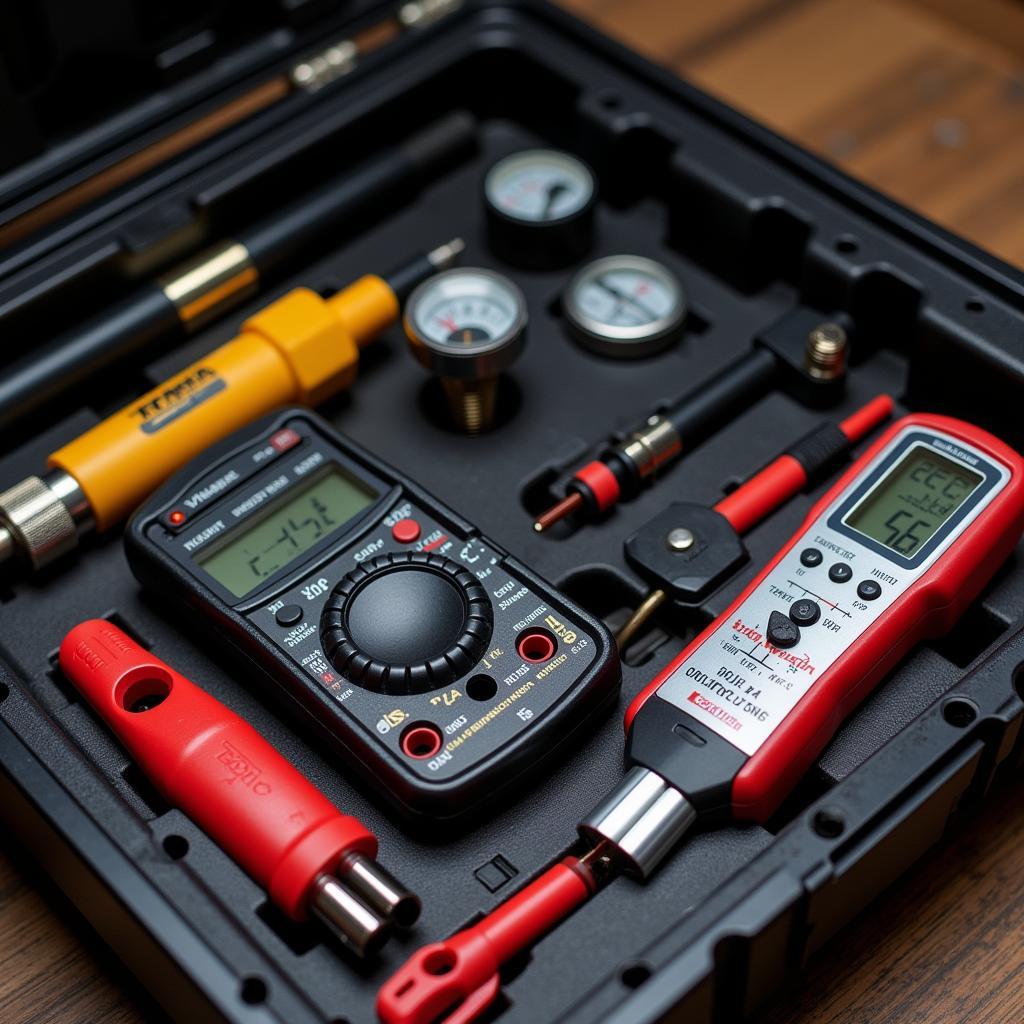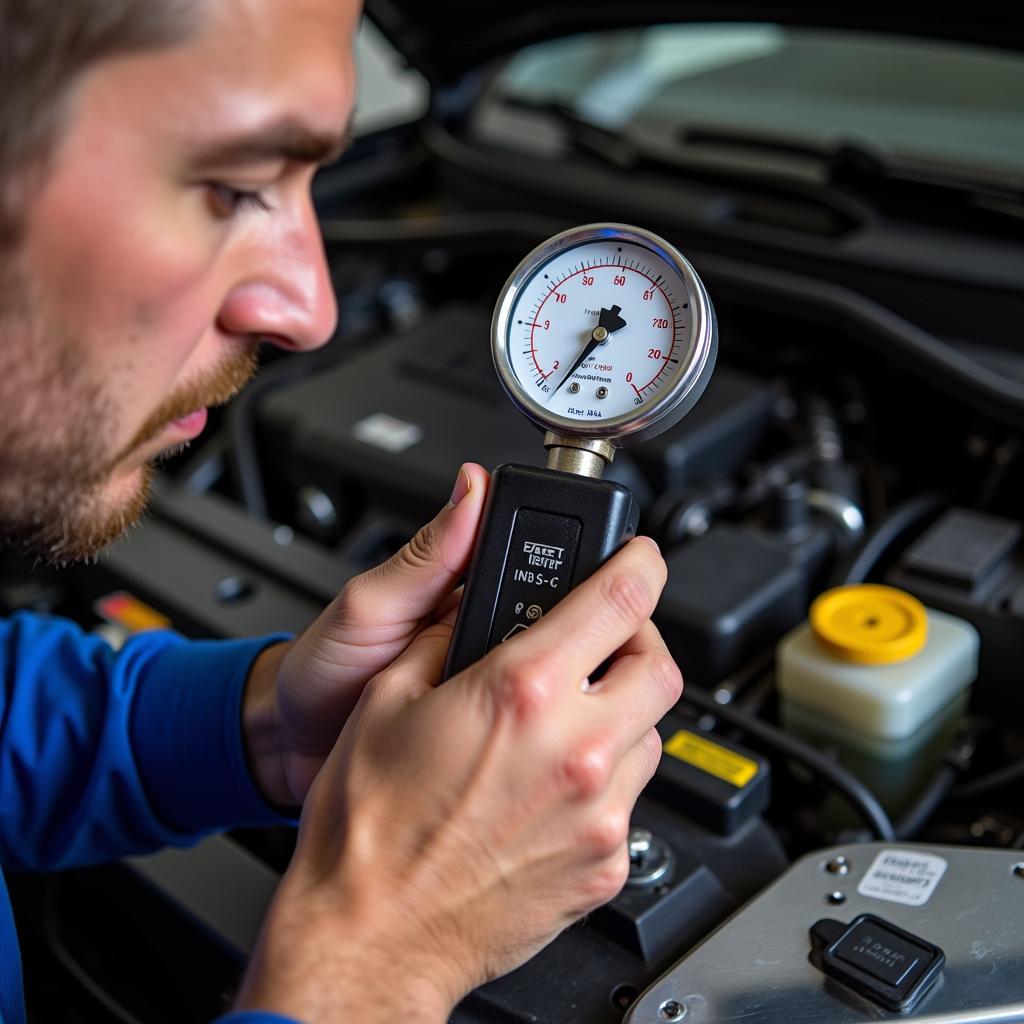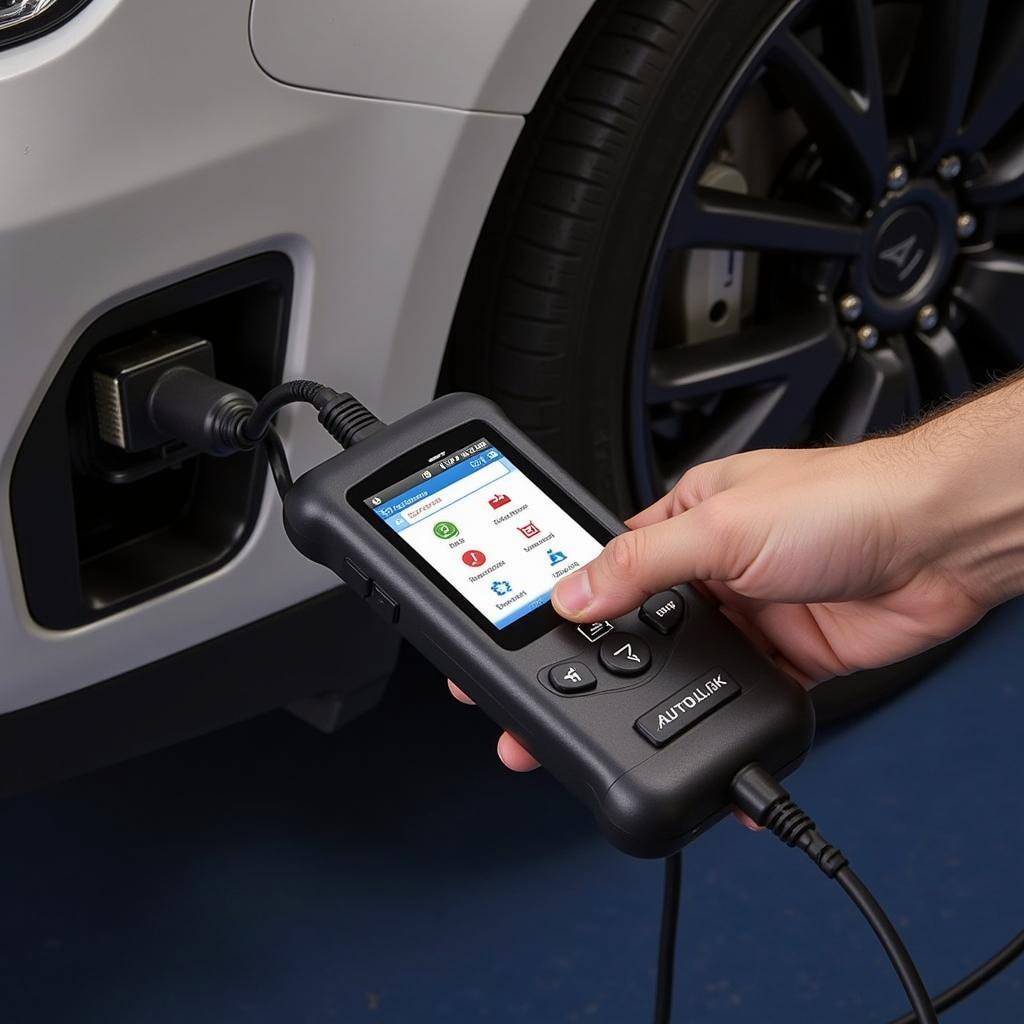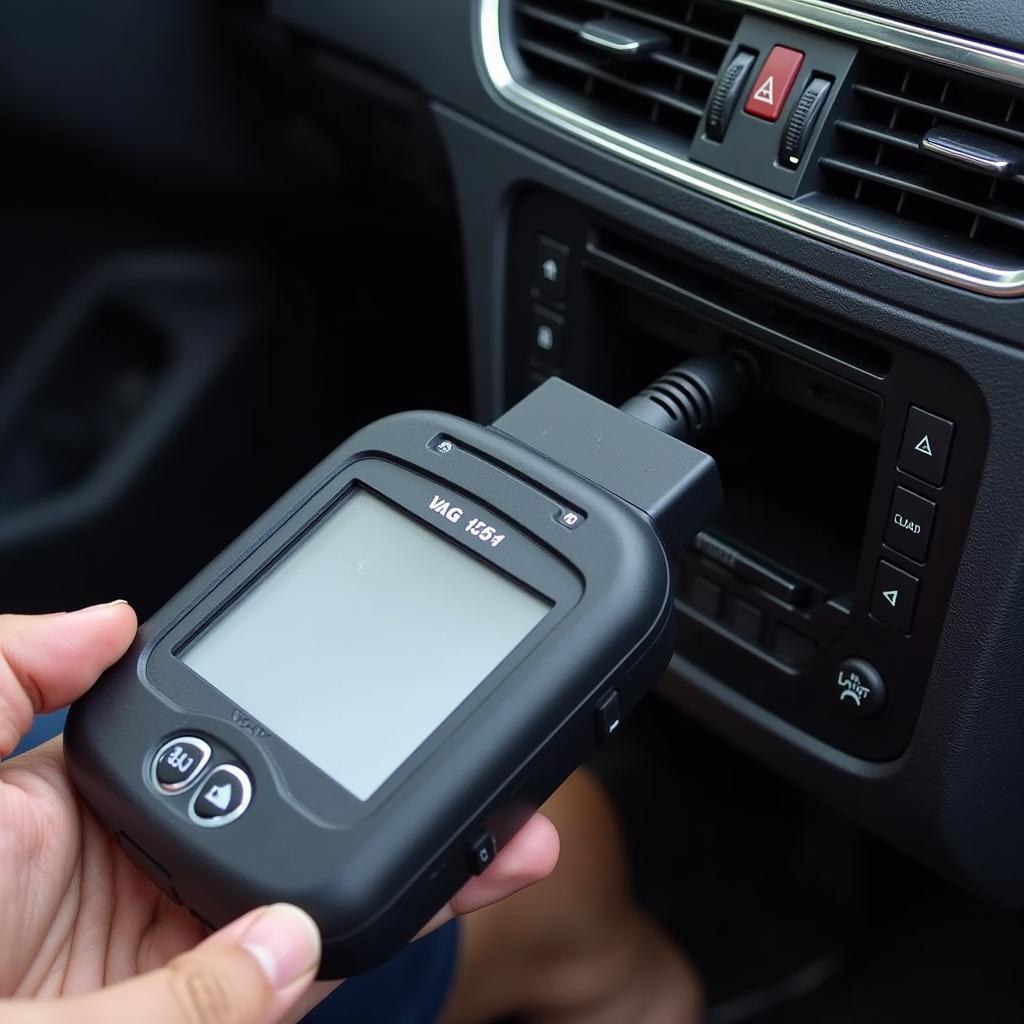Small engine problems can bring your work or leisure to a grinding halt. Whether you’re dealing with a stubborn lawnmower, a finicky chainsaw, or a sputtering ATV, the right diagnostic tools can save you time, money, and frustration. This guide will delve into the world of Diagnostic Tools For Small Engines, equipping you with the knowledge to troubleshoot and conquer those mechanical mysteries.
 Small Engine Diagnostic Tools in a Toolbox
Small Engine Diagnostic Tools in a Toolbox
Understanding the Importance of Diagnostic Tools
Before we dive into the specifics, let’s address the elephant in the room – why are diagnostic tools crucial for small engines? Imagine this – your lawnmower refuses to start. Is it the spark plug, the carburetor, or something more sinister? Guessing can lead you down a rabbit hole of unnecessary repairs and expenses.
Diagnostic tools provide concrete data, eliminating guesswork and enabling you to pinpoint the root cause of the issue. This targeted approach translates to faster repairs, reduced downtime, and significant cost savings in the long run.
Essential Diagnostic Tools for Every DIYer and Professional
Small engine problems manifest in various ways, from ignition hiccups to fuel system woes. To tackle these issues head-on, consider having these essential diagnostic tools in your arsenal:
1. Spark Plug Tester: Reigniting the Spark
A spark plug tester is your go-to tool for diagnosing ignition problems. It checks if the spark plug is sparking correctly and reveals the strength and consistency of the spark. A weak or erratic spark points to potential issues with the ignition coil, wiring, or even the spark plug itself.
2. Compression Tester: Gauging Engine Health
 Mechanic Using a Compression Tester on a Small Engine
Mechanic Using a Compression Tester on a Small Engine
The compression tester is a vital tool that measures the pressure created during the engine’s compression stroke. Low compression can indicate worn piston rings, a blown head gasket, or valve problems, often necessitating more involved repairs.
3. Multimeter: Unraveling Electrical Mysteries
Electrical gremlins can be particularly frustrating to diagnose. A multimeter helps you test for continuity, voltage, and resistance in electrical components. This versatile tool can identify faulty switches, broken wires, and problematic charging systems.
4. Fuel Pressure Tester: Assessing Fuel Delivery
Fuel delivery problems often masquerade as other issues, leading to misdiagnoses. A fuel pressure tester accurately measures the fuel pressure in the system, pinpointing issues with the fuel pump, fuel filter, or fuel lines.
5. Vacuum Gauge: Unveiling Engine Secrets
While not as common as other tools on this list, a vacuum gauge provides valuable insights into the engine’s internal workings. It measures the vacuum pressure in the intake manifold, revealing potential issues with valve timing, clogged exhaust systems, or intake leaks.
Choosing the Right Diagnostic Tools for Your Needs
The market offers a dizzying array of diagnostic tools, from basic models to advanced professional-grade systems. When choosing your tools, consider your skill level, the types of engines you work on, and your budget.
For casual DIYers: Start with a spark plug tester, compression tester, and a basic multimeter. These tools cover the most common small engine problems and are available at affordable price points.
For serious DIY enthusiasts: Invest in a more advanced multimeter, a fuel pressure tester, and consider adding a vacuum gauge to your collection for a more comprehensive diagnostic capability.
For professional mechanics: Professional-grade scan tools designed explicitly for small engines are indispensable. These tools offer advanced features like live data streaming, fault code reading, and component activation, streamlining the diagnostic process.
 Mechanic Diagnosing a Small Engine Using a Diagnostic Scanner
Mechanic Diagnosing a Small Engine Using a Diagnostic Scanner
“Investing in high-quality diagnostic tools is crucial for any serious mechanic,” says John Miller, a veteran small engine mechanic with over 20 years of experience. “It not only saves me time but also helps build trust with my customers by providing accurate and efficient diagnoses.”
Beyond the Basics: Advanced Diagnostic Techniques
As you delve deeper into small engine repair, you might encounter more complex problems that require advanced diagnostic techniques. Here are a few examples:
- Cylinder Leak Down Test: A more precise alternative to a compression test, a leak-down test identifies the source of compression loss – piston rings, valves, or head gasket.
- Carburetor Synchronization: For multi-cylinder engines, ensuring that all carburetors are working in harmony is crucial. This involves adjusting the carburetor linkages to achieve balanced fuel-air mixture delivery to each cylinder.
- Ignition Timing Adjustment: Proper ignition timing ensures that the spark plug fires at the optimal moment for efficient combustion. This process involves using a timing light and adjusting the ignition system to manufacturer specifications.
Conclusion
Diagnostic tools are no longer optional extras for small engine repair; they’re essential for accurate, efficient, and cost-effective troubleshooting. By understanding the functions of different tools and investing in those that align with your needs and skill level, you’ll be well-equipped to tackle any small engine problem that comes your way.
Need help choosing the right diagnostic tool or have a particularly stubborn engine issue? Don’t hesitate to contact the experts at ScanToolUS at +1 (641) 206-8880 or visit our office at 1615 S Laramie Ave, Cicero, IL 60804, USA. We’re always ready to help you keep your engines running smoothly.



